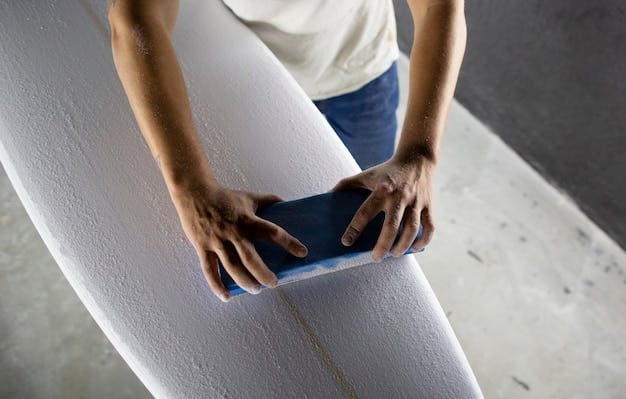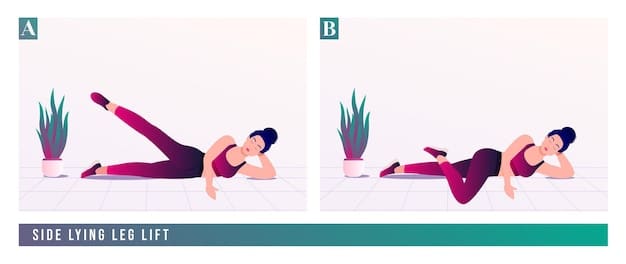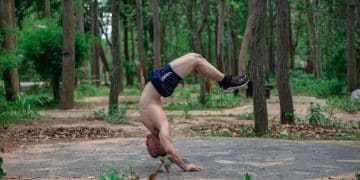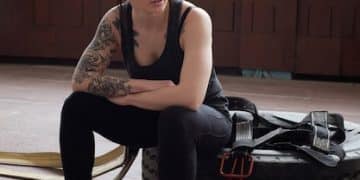5 Best Post-Workout Stretches for Muscle Soreness Relief and Recovery

Discover five essential post-workout stretches carefully selected to alleviate muscle soreness, improve flexibility, and accelerate your body’s recovery process, ensuring you’re ready for your next fitness endeavor.
After an intense workout, your muscles need some TLC. Discover the top 5 post-workout stretches to reduce muscle soreness and improve recovery, helping you bounce back faster and stronger!
Understanding Post-Workout Muscle Soreness
Delayed Onset Muscle Soreness (DOMS) is that achy, stiff feeling that sets in 24-72 hours after exercise. It’s a common experience, especially after trying a new workout or pushing yourself harder than usual. But understanding why it happens can help you take the right steps to alleviate it.
DOMS isn’t caused by lactic acid buildup, as was once thought. Instead, it’s believed to result from microscopic muscle damage and inflammation. While some soreness is a sign that you’re challenging your body, excessive soreness can hinder your training progress and make everyday activities uncomfortable.
The Science Behind DOMS
The process involves an inflammatory response as your body works to repair the damaged muscle fibers. This inflammation leads to swelling and sensitivity in the affected muscles, causing the characteristic pain of DOMS.
Why Stretching Helps
Stretching after a workout can help reduce muscle soreness by increasing blood flow to the muscles, which aids in the repair process and reduces inflammation. It also helps to restore muscles to their pre-exercise length, preventing stiffness. Regular stretching can also improve flexibility and range of motion, making you less prone to injury in the long run.

- Reduce Inflammation: Gentle stretches can help flush out inflammatory compounds.
- Increase Blood Flow: Improved circulation delivers nutrients for repair.
- Restore Muscle Length: Stretching prevents muscles from tightening up.
By understanding the causes of post-workout muscle soreness and the benefits of stretching, you can effectively manage discomfort and optimize your recovery. Incorporating these stretches into your routine will help you stay consistent with your fitness goals.
Stretch 1: Hamstring Stretch
The hamstring stretch is a fundamental movement that targets the muscles at the back of your thighs. These muscles are often tight, especially after activities like running, cycling, or weightlifting. Regularly stretching your hamstrings can improve flexibility, reduce lower back pain, and enhance overall athletic performance.
There are several variations of the hamstring stretch, but the standing hamstring stretch is a simple and effective option that you can do anywhere. Make sure to perform the stretch gently and avoid bouncing, which can cause injury.
How to Perform the Standing Hamstring Stretch
Stand with your feet hip-width apart. Gently bend forward from your hips, keeping your back as straight as possible. Reach towards your toes, but don’t force it. You should feel a gentle stretch along the back of your thighs. Hold the stretch for 20-30 seconds, and then slowly return to the starting position. Repeat 2-3 times.
- Proper Form: Keep your back straight to avoid straining your lower back.
- Gentle Movement: Avoid bouncing or jerking motions.
- Breathing: Breathe deeply and evenly throughout the stretch.
This stretch is great for increasing flexibility and reducing tightness in the hamstrings. Regular practice can lead to improved range of motion and reduced risk of injury.
Stretch 2: Quadriceps Stretch
The quadriceps, located on the front of your thighs, are crucial for movements like walking, running, and jumping. Tight quads can lead to knee pain and reduced flexibility. The standing quad stretch is a simple way to target these muscles and improve your overall lower body mobility.
This stretch is easy to perform but requires balance. If needed, hold onto a wall or chair for support. Focus on feeling the stretch in the front of your thigh without overextending your knee.
Performing the Standing Quadriceps Stretch
Stand tall and use one hand to hold onto a wall or chair for balance, if needed. Bend your knee and bring your heel towards your glutes. Reach back with your free hand and gently pull your foot closer to your glutes, feeling a stretch in the front of your thigh. Hold the stretch for 20-30 seconds, then switch legs and repeat. Aim for 2-3 repetitions on each leg.
Maintaining proper posture is essential during this stretch. Avoid leaning forward at the hips or arching your back, as this can reduce the effectiveness of the stretch and increase the risk of injury.
Consistent stretching of the quadriceps can lead to improved flexibility, reduced knee pain, and enhanced athletic performance. Make it a regular part of your post-workout routine.

Stretch 3: Calf Stretch
Your calf muscles, located on the back of your lower legs, play a vital role in movements like walking, running, and jumping. Tight calf muscles can contribute to foot pain, ankle stiffness, and even knee problems. The wall calf stretch is a simple yet effective way to alleviate tightness and improve flexibility.
This stretch can be easily performed using a wall or any stable surface. It targets both the gastrocnemius (the larger calf muscle) and the soleus (the smaller calf muscle), providing a comprehensive stretch for your lower legs.
Doing the Wall Calf Stretch
Stand facing a wall with your hands placed on the wall at shoulder height. Place one foot slightly behind the other. Keeping your back heel on the ground, lean forward until you feel a stretch in your calf. Hold for 20-30 seconds, then switch legs. Repeat 2-3 times on each leg.
- Targeting the Soleus: To stretch the soleus, bend your back knee slightly while performing the stretch.
- Proper Alignment: Ensure your back foot is pointing straight ahead to avoid twisting your ankle.
- Deep Breathing: Focus on taking slow, deep breaths throughout the stretch to help relax your muscles.
Regular calf stretching can improve ankle mobility, reduce your risk of Achilles tendonitis, and enhance your overall lower body function. Include it in your post-workout routine to keep your calves healthy and flexible.
Stretch 4: Chest Stretch
The chest muscles often get overlooked in post-workout recovery, but they are just as important as any other muscle group. Tight chest muscles can lead to poor posture and shoulder pain. The doorway chest stretch is a simple way to open up your chest and improve your upper body mobility.
This stretch requires a doorway or any similar opening. By gently stretching your chest muscles, you can counteract the effects of activities that cause you to hunch forward, such as sitting at a desk or lifting weights.
Performing the Doorway Chest Stretch
Stand in a doorway and place your forearms on the doorframe, with your elbows bent at a 90-degree angle. Gently lean forward until you feel a stretch across your chest. Hold for 20-30 seconds, then relax. Repeat 2-3 times.
Focus on feeling the stretch across your chest and shoulders. Avoid overstretching or forcing the movement, as this can lead to injury.
Regular chest stretching can improve your posture, reduce shoulder pain, and enhance your breathing capacity. Make it a part of your daily routine to keep your upper body healthy and flexible.
Stretch 5: Lower Back Stretch (Knee-to-Chest)
The lower back is a common area for muscle soreness, especially after activities like weightlifting or prolonged sitting. The knee-to-chest stretch is a simple and effective way to relieve tension and improve flexibility in your lower back muscles.
This stretch is gentle and can be performed by people of all fitness levels. It helps to decompress the spine and reduce muscle spasms, providing much-needed relief after a strenuous workout or a long day.
How to Do the Knee-to-Chest Stretch
Lie on your back with your knees bent and your feet flat on the floor. Gently pull one knee towards your chest, using your hands to deepen the stretch. Hold for 20-30 seconds, then switch legs. Repeat 2-3 times on each leg. For a deeper stretch, you can pull both knees to your chest simultaneously.
Maintaining a relaxed posture is key to this stretch. Avoid tensing your shoulders or neck, and focus on breathing deeply and evenly.
Regular lower back stretching can reduce pain, improve flexibility, and enhance your overall spinal health. Include it in your post-workout routine to keep your lower back strong and supple.
| Key Point | Brief Description |
|---|---|
| 💪 Hamstring Stretch | Improves flexibility in the back of the thighs, reducing lower back pain. |
| 🦵 Quadriceps Stretch | Enhances mobility and reduces knee pain by stretching the front of the thighs. |
| 🦶 Calf Stretch | Alleviates tightness in the lower legs, improving ankle mobility and reducing foot pain. |
| 🧍 Lower Back Stretch | Relieves tension and improves flexibility in the lower back muscles, reducing discomfort. |
Frequently Asked Questions
▼
Stretching after a workout helps reduce muscle soreness, improves flexibility, and enhances recovery by increasing blood flow to the muscles and restoring them to their pre-exercise length.
▼
You should hold each stretch for 20-30 seconds to allow the muscles to relax and lengthen. This duration helps to maximize the benefits of the stretch and reduce the risk of injury.
▼
Yes, these stretches can be performed daily, even on rest days, to maintain flexibility and promote muscle recovery. Regular stretching can help prevent muscle tightness and reduce the risk of injury.
▼
If you feel pain while stretching, stop immediately. You should only feel a gentle stretch, not pain. If the pain persists, consult with a physical therapist or healthcare professional.
▼
Avoid ballistic stretching (bouncing) as it can increase the risk of injury. Focus on static stretches, holding each position steadily. Also, avoid overstretching, which can cause muscle strain.
Conclusion
Incorporating these 5 post-workout stretches to reduce muscle soreness and improve recovery can significantly enhance your fitness routine. By prioritizing muscle care and flexibility, you’ll not only minimize discomfort but also optimize your body’s ability to bounce back stronger and more resilient for future workouts. Make these stretches a consistent part of your regimen for long-term fitness success.





